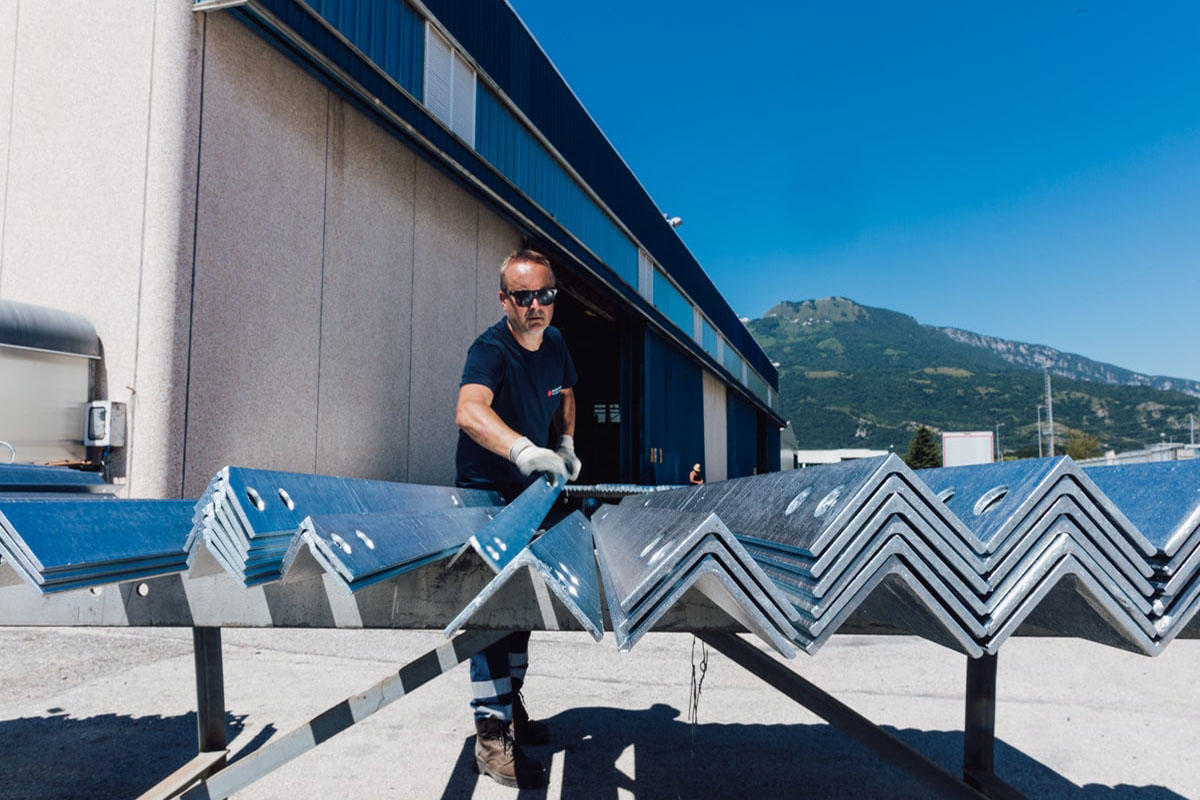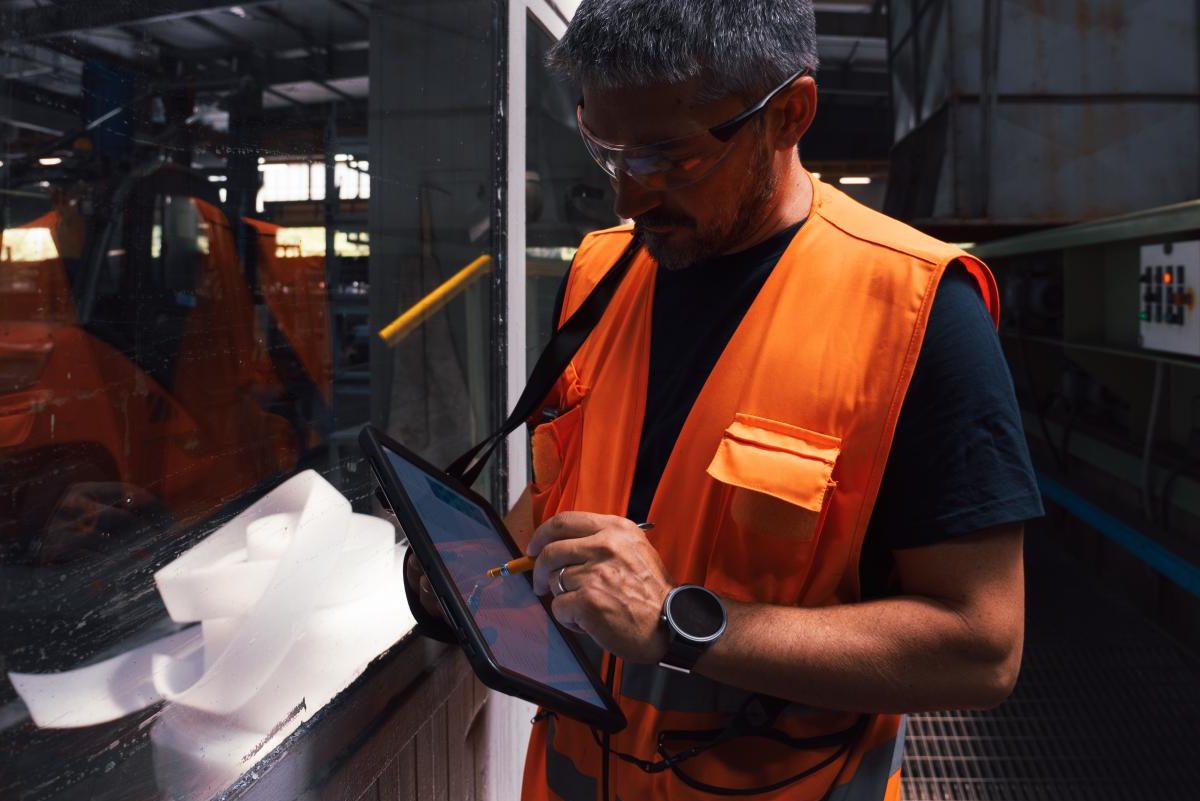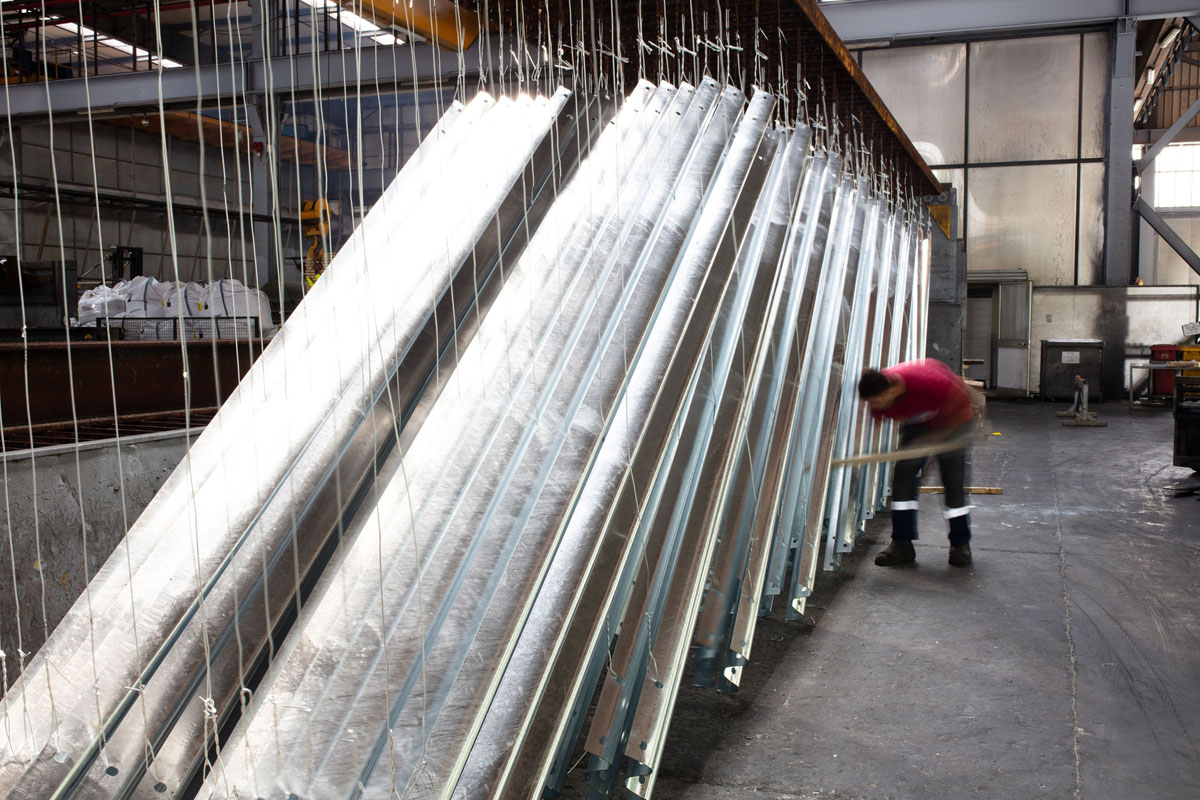Steel protection expertise
Number that make a difference.
30 tons: we are able to galvanize large structure, up to 30 tons weight
19 metres: our galvanizing kettle is the biggest in Europe, allowing us to deep pieces up to 19 metres of length.
Each stage of the production process is carefully controlled right up to the conformity declaration. Many years of experience and acquired skills provides an efficient and comprehensive service.
Are you interested in this type of processing?
Hot-dip galvanizing process
Pretreatment
Surface preparation for galvanizing consists of three steps:
Degreasing: a hot alkali solution removes organic contaminants such as paint markings, grease, and oil from the metal surface. Epoxies, vinyls, asphalt, or welding slag, which cannot be removed by degreasing, must be removed before galvanizing by grit-blasting, sand-blasting, or other mechanical means.
Pickling: a dilute solution of heated hydrochloric acid removes mill scale and iron oxides (rust) from the steel surface.
Fluxing: the final surface preparation step in the galvanizing process, an ammonium chloride solution, serves two purposes. It removes any remaining oxides and deposits a protective layer on the steel to prevent any further oxides from forming on the surface prior to immersion in the molten zinc.
Surface preparation is a critical step in the application of any coating.
Galvanizing
During the true galvanizing step of the process, the material is completely immersed in a bath of molten zinc. The bath chemistry requires at least 98% pure zinc maintained at 450° C.
While immersed in the kettle, the zinc reacts with the iron in the steel to form a series of metallurgically bonded zinc-iron intermetallic alloy layers, commonly topped by a layer of impact-resistant pure zinc.
Once the fabricated items coating growth is complete, it is withdrawn slowly from the galvanizing bath, and the excess zinc is removed by draining, vibrating, and/or centrifuging.
The metallurgical reaction will continue after the materials are withdrawn from the bath, as long as it remains near bath temperature.
Inspection
The inspection of hot-dip galvanized steel is simple and quick. The two properties of the hot-dip galvanized coating most closely scrutinized are coating thickness and appearance/surface condition. A variety of simple physical tests can be performed to determine thickness, uniformity, adherence, and appearance.
Durability
– The uses of hot-dip galvanized steel continue to evolve, and new markets are emerging all the time.
– Similarly, the decision to galvanize has matured beyond the customary corrosion protection to an array of other reasons.
– Though corrosion resistance is inherent any time HDG is utilized, more and more specifiers select hot-dip galvanized steel for other reasons including lowest initial cost, durability, longevity, availability, versatility, sustainability, and aesthetics.
Environmental and Economic Advantages:
Zinc is the 27th most abundant element in the Earth’s crust and has been present since the formation of earth. All life on earth is developed in the presence of zinc. Through natural erosion processes, a small part of the zinc in soil, rock and sediment is constantly moved and transported through the environment.
Zinc is essential to life, playing an important role in biological processes of all living organisms crucial for cell division, protein synthesis, the immune system and growth. Zinc is an essential mineral of “exceptional biologic and public health importance” considered a “Life Saving Commodity” by the United Nations.
Zinc bioavailability depends on complex interactions with the environment. To understand these interactions, the zinc industry supports research to develop tools that help scientists predict zinc bioavailability in different environmental conditions and matrices.
Zinc is Recycled
Economic and human development have always been closely linked to the control and production of materials. Due to continued growth of the global economy and of the world population at the same time, the demand for natural resources, such as fossil fuels, metals and minerals is increasing. This not only implies the question about depletion of natural resources, but also impacts to the environment and climate. Thinking in circles is an approach that helps us to understand how our material – zinc – makes its ways through mining, production, product life time and recycling, but also leads to effective measures for optimization and change in our approach to more resource efficient ways to produce, use, and recycle zinc.
At the end of its useful life, zinc recovered from modern products can be recycled without deteriorating. In addition to being sustainability during use, zinc also plays an important role during the end-of-life phase by reducing energy use, lowering emissions and minimizing waste disposal.
UNI EN ISO 1461:2009 Standard:
COATING PROPERTIES
1. APPEARANCE
The occurence of darker or lighter areas (e.g. cellular pattern or dark grey areas) or some surface unevennes shall not be a cause for rejection. Also the development of wet storage staining, primarily basic zinc oxide (formed during storage in humid conditions after hot dip galvanizing), shall not be a cause for rejection, providing the coating thickness remains above the specified minimum value.
Lumps and zinc ash shall not be permitted where they might affect the intended use of the hot dip galvanized article or its corrosion resistance requirement.
2. THICKNESS
Coatings applied by hot dip galvanizing are designed to protect the iron and steel products against corrosion. The length of time of corrosion protection by such coatings is approximately proportional to the coating thickness.
UNI EN ISO 14713-1: 2017: guidelines and recommendations for the protection against corrosion of iron and steel in structures. General principles of design and corrosion resistance contains valuable information on the life expectancy of galvanized coatings – including conservative predictions based on first-year zinc corrosion rates.
EN ISO 14713-1 also provides information on corrosion performance of zinc coatings in other exposure situations, including in soils, water and in contact with other materials.
FAQ:
HOW DOES GALVANIZING PROTECT STEEL FROM CORROSION?
Zinc metal used in the galvanizing process provides an impervious barrier between the steel substrate and corrosive elements in the atmosphere. It does not allow moisture and corrosive chlorides and sulfides to attack the steel. Zinc is more importantly anodic to steel meaning it will corrode before the steel until the zinc is entirely consumed.
WHY DO GALVANIZED STEEL APPEARANCES DIFFER FROM PROJECT TO PROJECT?
The steel chemistry is the primary determinant of galvanized coating thickness and appearance. Continuously cast steel produced by the steel companies has a wide variety of chemistries, thus the different coating appearances. Chemical elements of silicon and phosphorus change the appearance of the galvanized products. The appearance of the coating (matte gray, shiny, spangled) does nothing to change the corrosion protection of the zinc coating.
HOW LONG WILL HOT-DIP GALVANIZING PROTECT MY STEEL FROM CORROSION?
The corrosion rate of zinc and how long it will provide protection is a function of the coating thickness and the number of corrosive elements in the atmosphere. For example, in rural settings where there are less automotive/truck exhaust and plant emissions, galvanized steel can easily last over 40 years without maintenance. Industrial and marine locations contain significantly more aggressive corrosion elements such as chlorides and sulfides and galvanized steel may last from 10 to 20 years in those cases.



